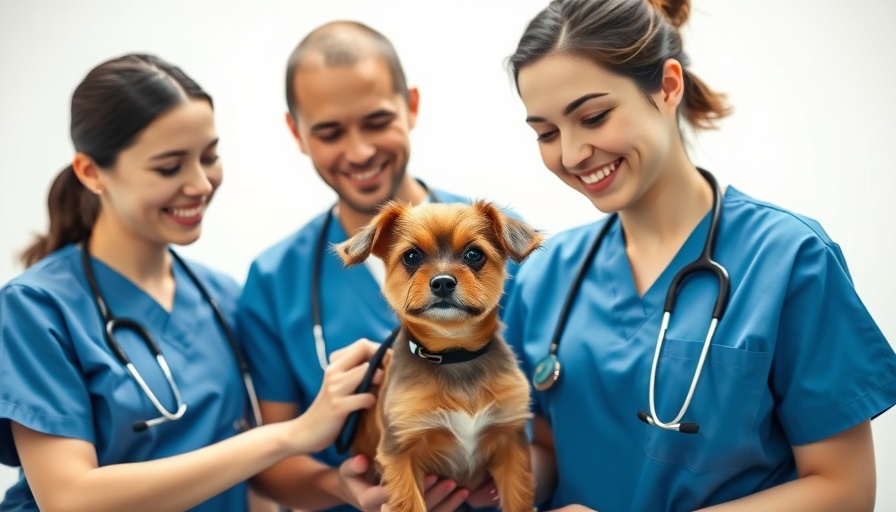
Understanding the Essential Role of Veterinary Technicians
In the heart of our beloved pet care community lies an incredible yet often overlooked team of professionals: veterinary technicians. Celebrating National Veterinary Technician Week from October 13-19, it's the perfect opportunity to explore the invaluable contributions these skilled individuals make daily. As the pet ownership boom continues, understanding the significance of veterinary technicians is vital for pet owners who want the best for their furry companions.
Why Veterinary Technicians Matter
Veterinary technicians are essential players on a pet’s healthcare team. Their roles may vary from assisting in surgeries to managing patient records and educating pet owners about health and nutrition. Surprisingly, 47% of pet owners aren’t aware of how impactful these technicians are in promoting their pets' health, which highlights the need for better awareness and communication within the community.
Skills That Make a Difference
One of the hallmark characteristics of veterinary technicians is their versatility. They are trained to handle various responsibilities, such as conducting diagnostic imaging and performing laboratory procedures. Quick thinkers who learn to adapt quickly, these professionals ensure that all pets receive quality care regardless of the challenges that arise—a necessary skill in the fast-paced environment of animal hospitals.
Behind the Scenes: Surgical Support
Many pet owners don’t realize the extensive training and involvement of veterinary technicians during surgical procedures. They assist licensed veterinarians with anesthesia administration, monitor vital signs, and provide critical post-operative care. For pet owners, understanding this chain of support can alleviate anxieties related to their pets undergoing surgery.
Building Trust Through Compassion
Compassion is a vital trait for veterinary technicians. It allows them to forge deeper connections with both pets and their owners. They offer emotional support during critical moments, especially in emergencies or end-of-life situations, ensuring that both pets and families feel cared for and understood. This empathetic approach is crucial for fostering a comforting environment during stressful times.
The Journey of Becoming a Veterinary Technician
Becoming a veterinary technician requires dedication, typically involving 2-4 years of post-high school education from accredited programs. These programs cover vital knowledge areas, including anatomy, pharmacology, and animal care, ensuring that graduates are well-prepared for their essential roles. To maintain their credentials, technicians engage in lifelong learning, aligning with holistic health practices, including natural remedies and pet nutrition.
Knowing Your Technician’s Credentials
It’s important to understand what qualifies someone as a veterinary technician. Depending on the state, they may hold various credentials such as Certified Veterinary Technician (CVT), Registered Veterinary Technician (RVT), or Licensed Veterinary Technician (LVT). Familiarizing oneself with these designations can enhance trust in their expertise, ensuring your pet receives top-notch veterinary care.
Connecting with Your Veterinary Technician
As pet owners, taking steps to understand and connect with the veterinary technicians who care for your pets can significantly enhance the pet care experience. A simple conversation can provide insights into your pet’s health, create a supportive community, and promote holistic health practices that benefit both pets and their owners.
Veterinary technicians play a crucial role in the welfare of our pets, and by recognizing their hard work, we also contribute to the betterment of the veterinary community as a whole. Knowing how to engage with these professionals fosters a positive environment that promotes not just pet health, but also the well-being of all family members involved.
 Add Row
Add Row  Add
Add 




Write A Comment